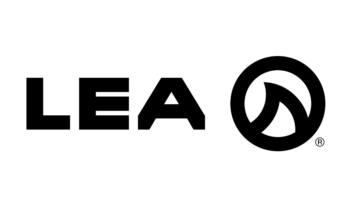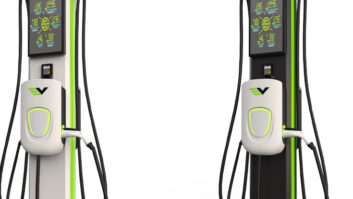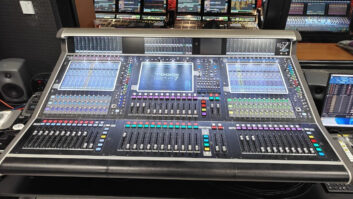
Texas Instruments has been in the business of making innovative chips for projection technology for over a decade-and-a-half now, with the company’s Dr Larry Hornbeck having invented the first optical semiconductor – known as the Digital Micro Mirror – in 1997.
At yesterday’s showcase in the St Martin’s Lane hotel, central London, the company exhibited a variety of new non-display devices that the DLP chip can be – and is – used for.
The company says the use of its chips in projectors amounts to 85-95% of the digital cinema market share thanks to partnerships with projector manufacturers NEC, Barco and Christie. Most recently, Barco strengthened an existing partnership with US cinema company Cinemark for the deployment of DLP projectors in South America.
The ongoing global transition to digital cinema is helping to drive overall growth in the cinema market, but with the company only experiencing 3% year-on-year growth in this area, coupled with the fact some companies were and still are extracting the DLP chip to make non-display devices, the Texan company opted to explore other avenues.
“It really started that we had people buying our projectors and hacking them open – we actually called them ‘the hackers’, explained Kent Novak, senior vice president and general manager, Texas Instruments DLP. “They would open the projectors so that they could get to the DLP chip and light engine. Then they would go and build something that we had not thought about and had absolutely no experience with.”
This drove the company into integrating DLP chips into new devices. New areas include 3D scanners for 3D fingerprinting and wound therapy. The latter involves using optical imaging to determine how much blood and oxygen are around a wound.
The new application areas are made possible by innovative DLP development kits, which are claimed to have made the technology more easily accessible. The kits involve using the DLP chip and light source combined with a processor – FPGA or DSP – resulting in generation of light patterns. Then a capture device is added – such as camera – so that when these three elements are put together it creates an optical sensor, so that measurements of the concentration of gas present in a liquid can be taken.
Another new device which integrates DLP technology is the Christie medical VeinViewer (pictured), which Novak describes as an ‘augmented reality’ device. It uses infrared light – so it can differentiate between where the veins and arteries are in comparison to the surrounding skin cells. The VeinViewer then projects the image back onto the skin to show where the veins are located.
4K projection technology was another talking point; according to Novak approximately 20% of cinema systems globally use 4K technology while the remainder are 2K. The question over 4K is: how can the technology translate into the rest of the projector market?
“7% of the home cinema market is for projectors while the rest is conference rooms and the vast majority of it is education,” explained Novak. “I don’t see that China, India, Russia, Eastern Europe or the Middle East is going to want a 4K projector inside of their classrooms.
“I do, however, think it will come into home theatre. But I think the immediate challenge is content and the second part is distribution. We have 4K technology and we will [release 4K products] when it seems closer to the market. I believe that we will see the technology more prominent in two years’ time. Japan is leading distribution as it’s being pushed the country’s TV manufacturers.”
www.dlp.com
www.barco.com
www.necdisplay.com
www.christiedigital.co.uk







